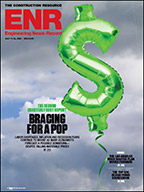If all goes according to the Metropolitan Transportation Authority’s plan, in 59 hours starting 7 p.m. Friday, July 15, Los Angeles will avoid “Carmageddon.”
All of Southern California, it seems, is bracing for the shutdown of a 10-mile section of Interstate 405 so that one of its overpasses, the Mulholland Drive Bridge, can be partially demolished as part of a $1-billion project to upgrade the I-405 between Interstate 10 and U.S. 101.
The media-saturated region dubbed the weekend closure “Carmageddon” in reference to the end of Southern California driving as we know it. More than 300,000 vehicles traverse that section of I-405 every day. The MTA has issued the order: “Plan ahead, avoid the area or stay home.” One airline, JetBlue, is advertising flights from Burbank Airport to Long Beach Airport.
According to Dave Sotero, a senior spokesman for the MTA, two other overpasses in this section have been demolished with little fanfare – the Sunset Bridge in January 2010 and the Skirball Center Drive overpass 10 months later.
Sotero says those bridges were designed with center support columns, which enabled workers to demolish the bridges in stages while keeping the freeway beneath open. The Mulholland Bridge is different: Built in 1960 before the emergence of the I-405 as a major thoroughfare, the overpass had no center columns.All that can be done, says Sotero, was for the I-405 to be closed in both directions while Kiewit Infrastructure Group, Los Angeles, the general contractor, destroyed the southern half of the bridge, which will be rebuilt over an 11-month period, followed by the demolition of the northern half next summer.
According to news reports, the two weekend closures for the Mulholland Bridge might have been avoided if an original design, incorporating a single four-lane overpass, was approved. Local opposition shot down that idea.
Meanwhile, Kiewit’s spokesman Dan Kulka says the Mulholland project will get underway around midnight Friday when 85 trucks will empty a mountain of dirt under the bridge to cushion fallen debris. Next, crews will begin cutting away on the bridge followed by the use Saturday of massive hoe rams with 80-ft arms to chip away at the remainder.
“The hoe rams have to cut the concrete pieces down to sizes that can be easily removed from the demolition site,” says Kulka. “We’ll be recycling the concrete and rebar, which will be stored at yards scattered across the project area.”

